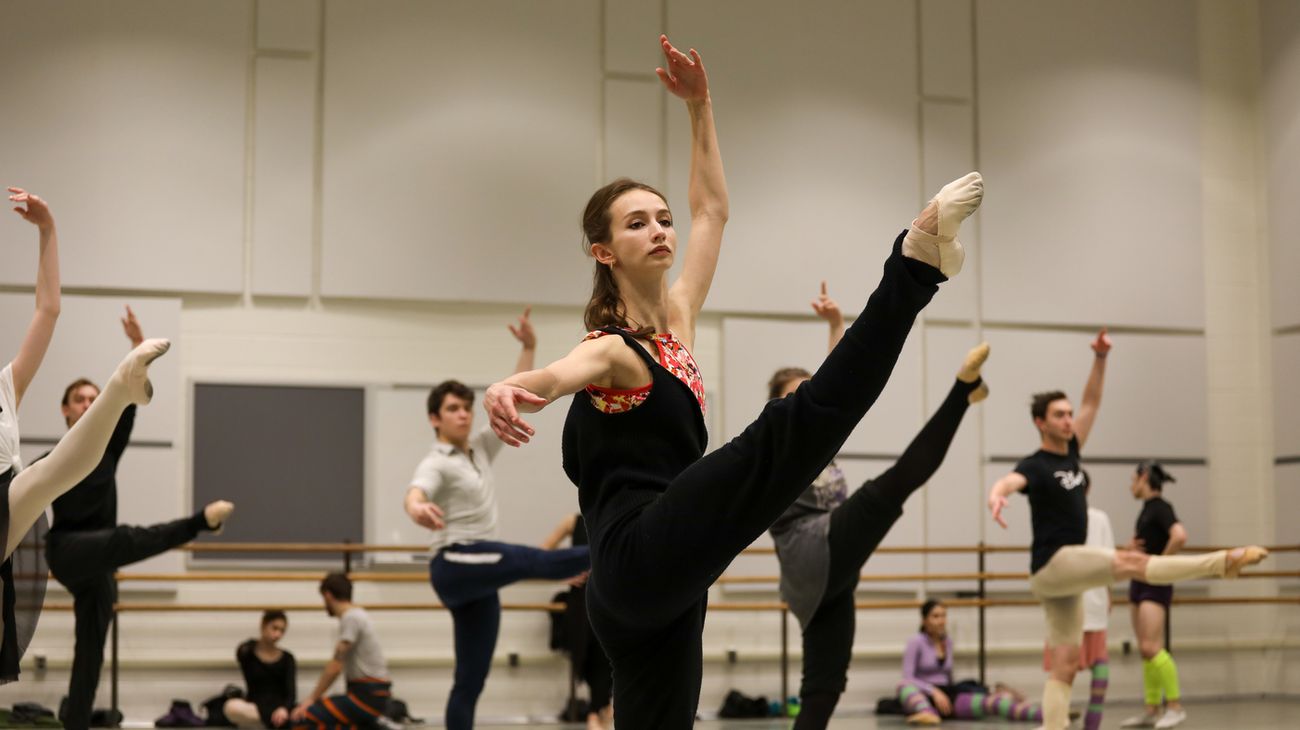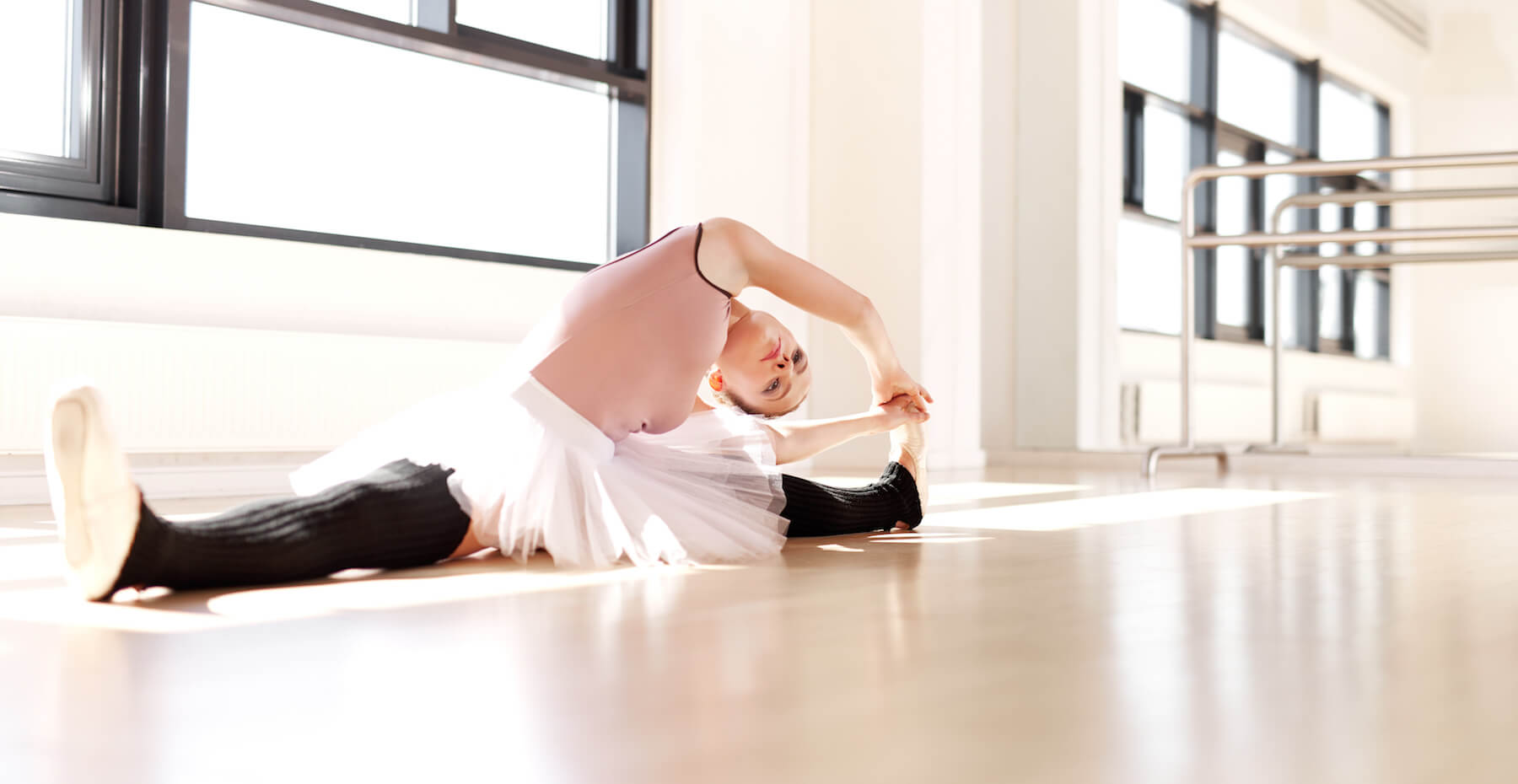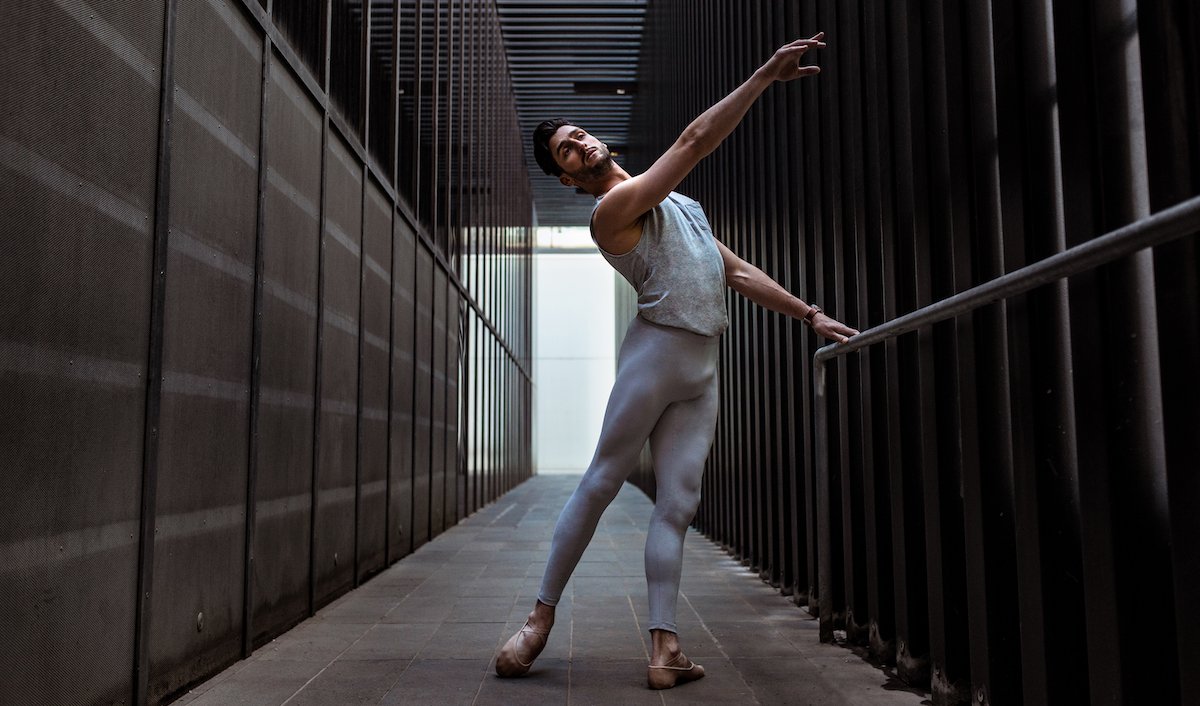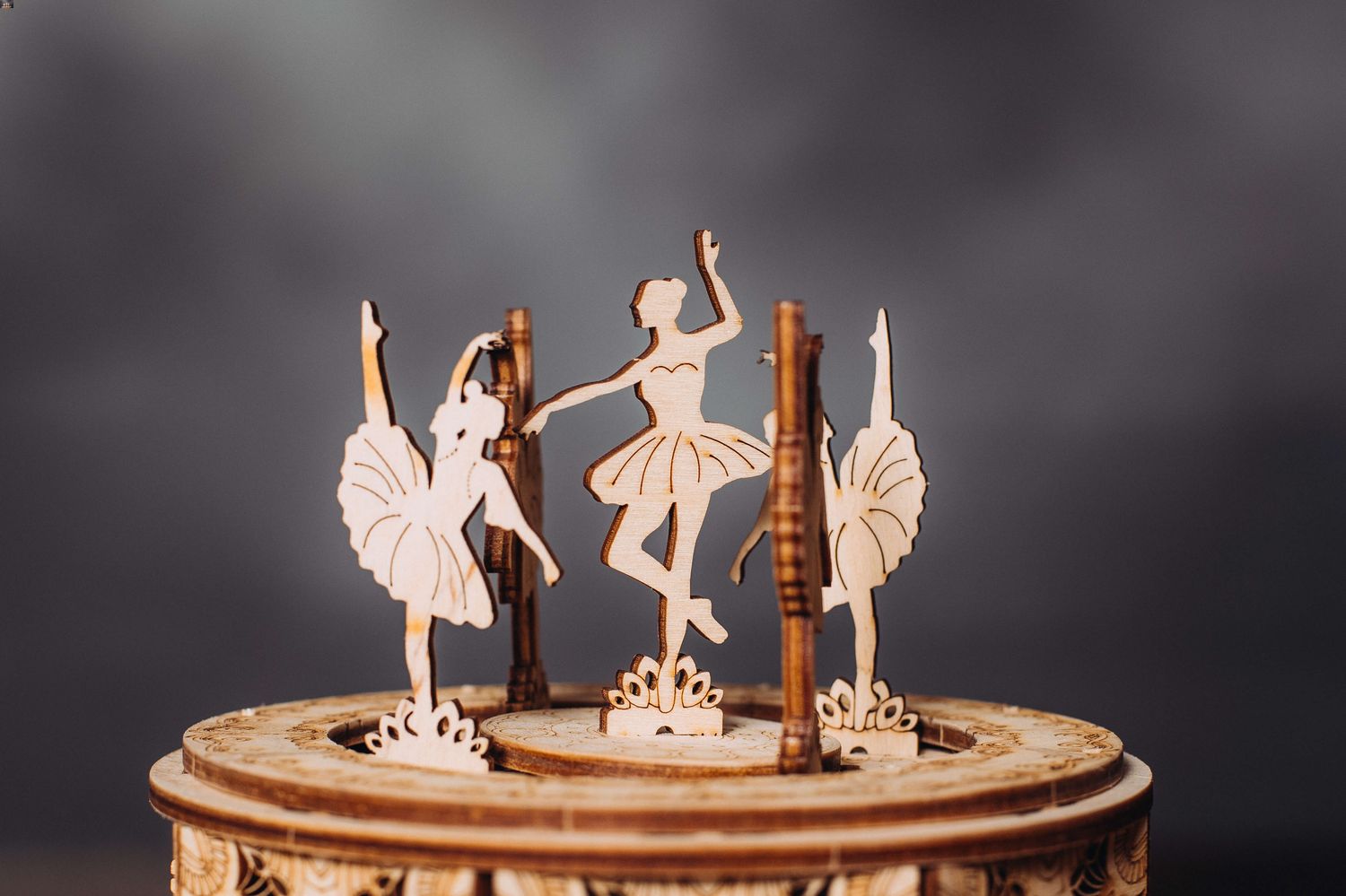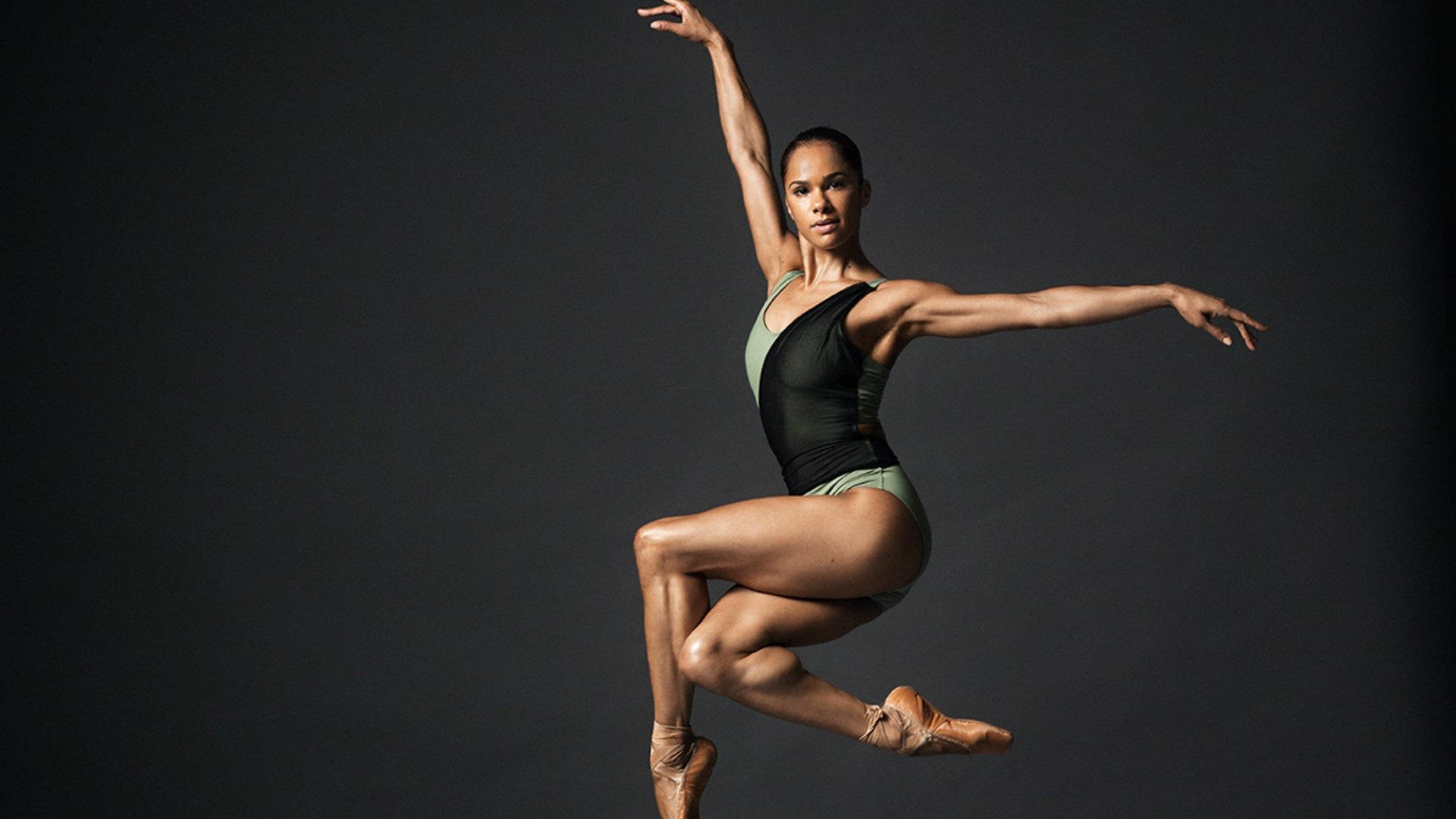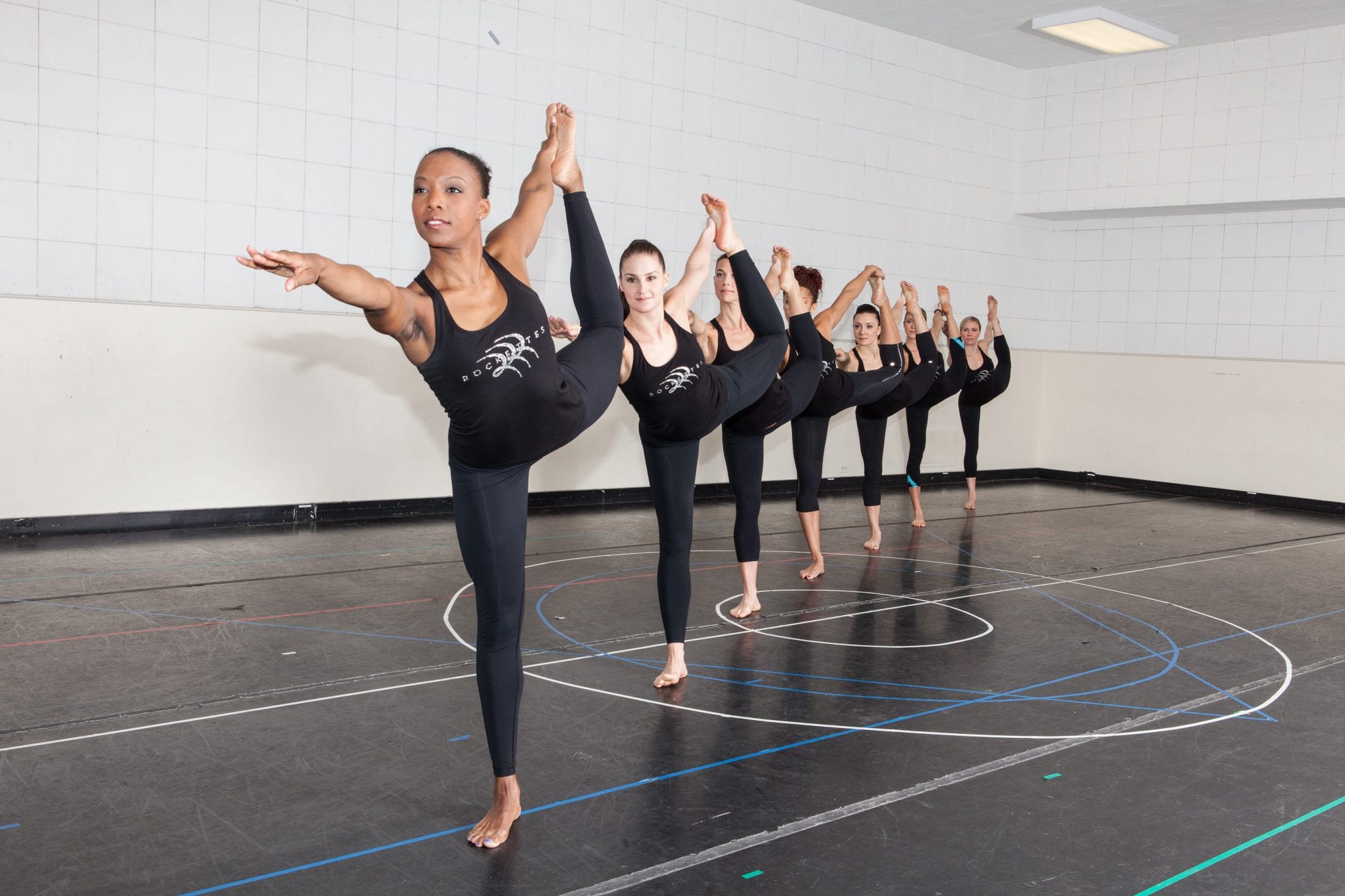Home>Events & Info>Ballet>How To Be A Ballet Dancer
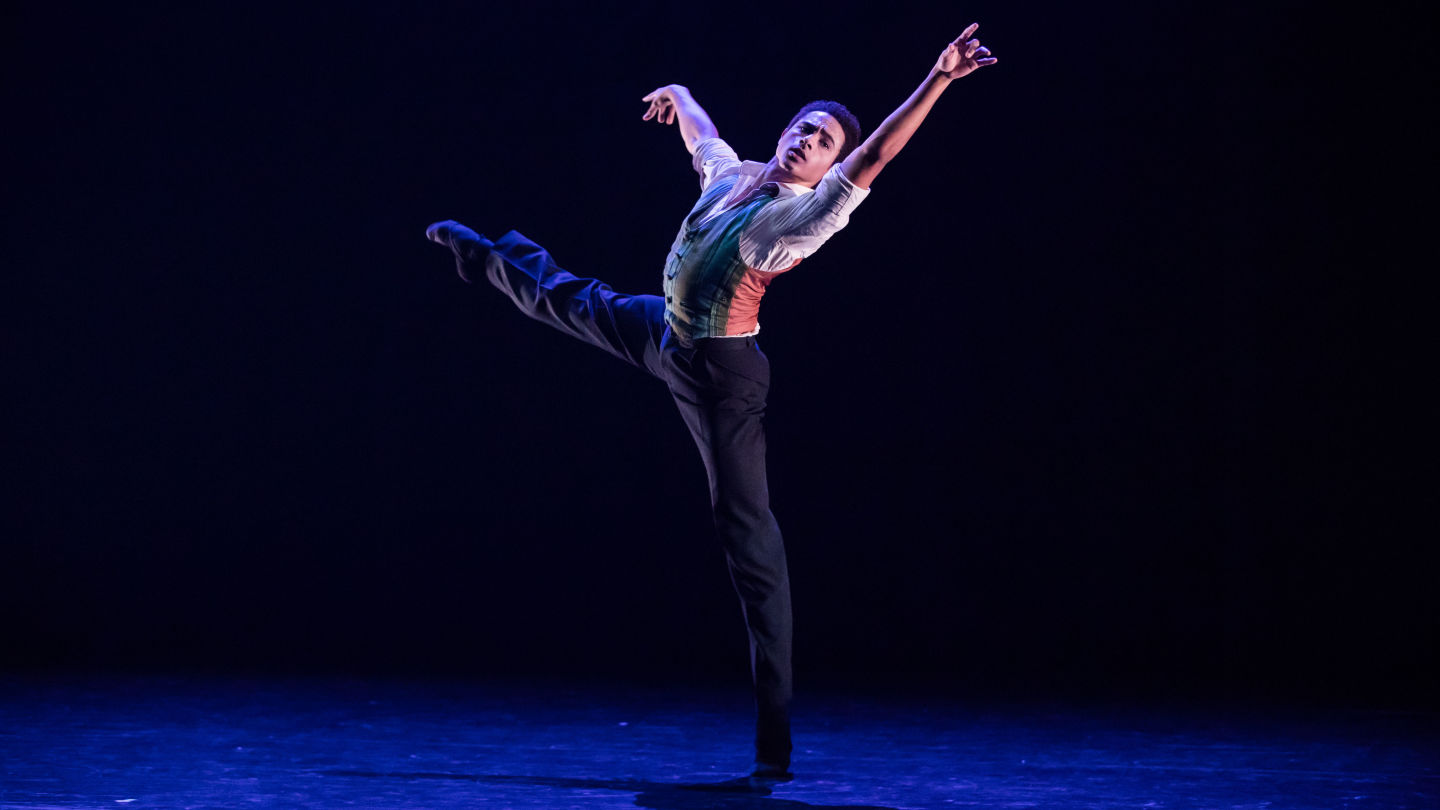

Ballet
How To Be A Ballet Dancer
Modified: January 22, 2024
Learn the art of ballet and become a skilled ballet dancer with our comprehensive guide. Master the techniques, improve flexibility, and achieve grace and poise.
(Many of the links in this article redirect to a specific reviewed product. Your purchase of these products through affiliate links helps to generate commission for AudioLover.com, at no extra cost. Learn more)
Table of Contents
- Introduction
- Step 1: Discovering Your Passion for Ballet
- Step 2: Finding a Ballet School or Studio
- Step 3: Beginning Ballet Training
- Step 4: Understanding Ballet Technique and Vocabulary
- Step 5: Developing Strength, Flexibility, and Stamina
- Step 6: Mastering Ballet Moves and Combinations
- Step 7: Improving Posture and Body Alignment
- Step 8: Learning Ballet Repertoire and Variations
- Step 9: Taking Ballet Examinations and Assessments
- Step 10: Striving for Professional Ballet Opportunities
- Conclusion
Introduction
Welcome to the captivating world of ballet! Ballet is a timeless and elegant form of dance that has enchanted audiences for centuries. It combines graceful movement, technical precision, and artistic expression to create breathtaking performances that leave spectators in awe.
Whether you have dreams of becoming a professional ballet dancer or simply want to explore this beautiful art form for personal enjoyment, this comprehensive guide will provide you with the necessary steps to embark on your ballet journey.
Ballet requires dedication, discipline, and a passion for the art. It demands strength, flexibility, and stamina, as well as a deep understanding of technique and musicality. This guide will walk you through each stage of your ballet training, from discovering your love for ballet to striving for professional opportunities.
With each step along the way, you will unlock the secrets and the beauty of ballet, gaining the skills and knowledge necessary to become a proficient dancer. So, put on your ballet shoes, tie your hair back, and let’s dive into the enchanting world of ballet!
Step 1: Discovering Your Passion for Ballet
The first step towards becoming a ballet dancer is discovering your passion for this magnificent art form. Ballet requires dedication and commitment, so it’s important to have a genuine love and interest in the dance style.
If you’re new to ballet, a great way to explore your passion is by watching ballet performances. Attend live ballet shows or watch recorded performances online to immerse yourself in the beauty and grace of ballet. Observe the intricate movements, the storytelling, and the emotions conveyed through dance. Pay attention to the dancers’ technique and try to understand the connection between the music and the choreography.
Another way to ignite your passion for ballet is by reading books on ballet history and biographies of famous ballet dancers. Learning about the origins of ballet and the lives of renowned dancers can deepen your appreciation for the art form and inspire you to pursue it further.
Additionally, consider taking introductory ballet classes to experience the physicality and technicality of ballet firsthand. Many ballet schools and studios offer beginner classes for individuals of all ages. These classes will give you a taste of ballet training and help you determine if ballet is something you want to pursue.
Ballet also requires discipline and perseverance, as it can be physically demanding and mentally challenging. Take some time to reflect on your commitment level and your willingness to put in the hours of practice and training that ballet requires. Ask yourself if you are prepared to make sacrifices in other areas of your life to pursue your ballet dreams.
Ultimately, discovering your passion for ballet is a personal journey. It’s about finding joy and fulfillment in the art of dance and being motivated to push yourself to new heights. Once you have confirmed your passion and commitment, you are ready to move on to the next step: finding a ballet school or studio.
Step 2: Finding a Ballet School or Studio
Now that you have discovered your passion for ballet, the next crucial step is finding a ballet school or studio that aligns with your goals and aspirations. The right training environment will provide you with the foundation and guidance you need to progress in your ballet journey.
Start by researching ballet schools in your area. Look for establishments that have a strong reputation and a track record of producing talented dancers. Seek recommendations from fellow ballet enthusiasts, dance teachers, or even local professional dancers who may have insights into reputable schools.
Consider visiting potential ballet schools to observe classes and meet instructors. Pay attention to the atmosphere and teaching style. A good ballet school should prioritize technical excellence, but also foster a positive and supportive learning environment. Talk to current students and their parents, if possible, to get their perspectives on the school’s curriculum, teachers, and overall experience.
It’s important to find a ballet school that offers classes appropriate for your age and skill level. Many schools have different levels of classes, from beginners to advanced, to ensure that students receive instruction tailored to their abilities. Starting at the appropriate level will set you up for success and allow you to progress at a pace that challenges yet doesn’t overwhelm you.
Consider the logistics as well. Look for a ballet school that is conveniently located and offers class schedules that fit into your daily routine. Ballet training requires regular attendance, so choosing a school that is easily accessible will make it easier for you to stay committed to your training.
Lastly, consider the cost of tuition and any additional fees or expenses associated with attending the ballet school. While quality training is invaluable, it’s important to find a ballet school that fits within your budget. Some schools may offer scholarships or financial aid options, so don’t hesitate to inquire about any available opportunities.
Finding the right ballet school is the foundation of your journey as a ballet dancer. It will provide you with the training, guidance, and support needed to develop your skills and reach your full potential. Once you have found the perfect ballet school, you are ready to begin your ballet training in earnest.
Step 3: Beginning Ballet Training
With a ballet school or studio selected, it’s time to embark on your ballet training journey. Beginning ballet training is an important step towards building a strong foundation of technique and understanding the principles that form the core of ballet.
When you start ballet classes, you will typically begin with the basics, focusing on developing proper body alignment, posture, and coordination. You will also learn ballet terminology and positions, such as the five basic positions of the feet and arms.
Ballet classes usually begin with a warm-up to prepare the body for the physical demands of dance. This may involve stretching exercises, core strengthening exercises, and movements designed to improve flexibility. The warm-up helps prevent injuries and prepares the body for the technical elements of ballet.
In the early stages of ballet training, you will also learn fundamental ballet movements, known as the ballet barre exercises. These exercises are performed while holding onto a stationary barre for support. The barre exercises focus on developing strength, balance, and flexibility, as well as improving turnout (rotation of the legs from the hips) and maintaining proper body alignment.
Once you have gained some proficiency with the barre exercises, you will progress to practicing ballet movements and combinations in the center of the dance studio, often referred to as center work. This stage of training introduces more complex movements, including turns, jumps, and adagio (slow and controlled movements), while still emphasizing proper technique and alignment.
Throughout your ballet training, you will also work on developing your musicality and artistry. This involves understanding the rhythm and tempo of the music and learning to express emotions and tell stories through your movements. Ballet is not just about executing steps; it is about conveying a narrative and evoking emotions through the language of dance.
Remember, ballet is a journey, and progress takes time. Be patient with yourself and embrace the process of learning and improving. Consistent practice and dedication will yield results and allow you to advance to more challenging levels of ballet training.
As you continue your ballet training, you may have the opportunity to participate in ballet performances and showcases. These experiences will further enhance your understanding of the art form and provide valuable stage experience.
Starting your ballet training with a solid foundation in technique and understanding will set you up for success as you progress in your ballet journey. So, lace up your ballet shoes, listen to the music, and embrace the joy and discipline of beginning ballet training.
Step 4: Understanding Ballet Technique and Vocabulary
To become a skilled ballet dancer, it is essential to develop a strong understanding of ballet technique and vocabulary. Ballet technique refers to the specific principles, movements, and positions that form the foundation of ballet. The vocabulary consists of the unique terms and terminology used in ballet to describe various movements and positions.
As you progress in your ballet training, you will delve deeper into the intricacies of ballet technique. This includes mastering proper body alignment, developing control and grace in movements, and expanding your range of motion and flexibility.
Understanding ballet technique begins with mastering the fundamental positions of the arms and feet. The arms have various positions, including first, second, third, fourth, and fifth positions. The feet also have five basic positions that determine the placement of the feet in relation to each other.
Additionally, ballet technique emphasizes proper turnout, which is the rotation of the legs from the hips. Turnout is a key element in ballet as it creates a visually pleasing aesthetic and allows for greater range of movement. It takes time and consistent practice to develop and maintain proper turnout.
Other essential aspects of ballet technique include proper posture, alignment, and placement of the body. This involves engaging the core, maintaining a lifted and lengthened spine, and ensuring that the body is properly aligned from head to toe. Proper body alignment not only contributes to the aesthetics of ballet but also plays a crucial role in preventing injuries and facilitating efficient movement.
As you become more familiar with ballet technique, you will encounter various movements and steps that make up the vocabulary of ballet. From basic movements like pliés (bending of the knees) and relevés (rising onto the toes) to more advanced movements like pirouettes (turns) and grand jetés (big jumps), each movement has a specific name and technique associated with it.
Learning ballet vocabulary is like learning a new language. It is important to listen and pay attention to the correct pronunciation and spelling of each term. Understanding the meaning of the terms will enable you to follow instructions in class, execute movements with precision, and communicate effectively with ballet teachers and fellow dancers.
As you progress in your ballet training, you will continue to refine your understanding of ballet technique and expand your ballet vocabulary. It is a lifelong journey of learning and honing your skills. Embrace the challenge and enjoy the beauty of ballet technique as you refine your movements and strive for technical excellence.
Step 5: Developing Strength, Flexibility, and Stamina
Ballet dancers possess a remarkable level of strength, flexibility, and stamina. Developing these physical attributes is crucial in order to perform the demanding movements and sequences in ballet with grace and precision. In this step, we will explore the importance of building strength, flexibility, and stamina in ballet training.
Strength is fundamental for executing the various dynamic movements in ballet. It helps dancers maintain proper body alignment, control their movements, and execute leaps, turns, and jumps with power and precision. Strength training for ballet typically focuses on developing core strength, leg and foot strength, and upper body strength. Core exercises like planks and abdominal work help dancers maintain stability and control during movements. Leg exercises like lunges and relevés strengthen the quads, hamstrings, and calves. Upper body exercises like push-ups and arm exercises enhance posture and arm control.
Flexibility is another key aspect of ballet. It allows dancers to achieve positions with ease, maintain extended lines, and execute movements with elegance and fluidity. Stretching exercises are an integral part of a ballet dancer’s training routine. Targeted stretches for the hips, legs, back, and feet help improve overall flexibility and enhance the extension and range of motion required in ballet movements.
Endurance and stamina are vital for ballet dancers to perform with consistency and energy throughout a ballet piece or a long rehearsal. Ballet classes and rehearsals can be physically demanding, requiring sustained effort and concentration. Building stamina involves cardiovascular exercises like brisk walking, jogging, or cycling to improve overall fitness and endurance. Additionally, practicing and repeating ballet combinations and movements help dancers develop the muscular endurance necessary to perform extended sequences without fatigue.
It’s important to approach strength, flexibility, and stamina training in ballet with caution and under proper guidance. Warm-up exercises and stretching should be incorporated both before and after dance practice to prevent injuries and promote muscle recovery. Gradual progression is key in building strength and flexibility, as pushing too hard too soon can lead to strain or injury.
Consistency is also crucial in developing these physical attributes. Regular ballet classes, supplemental training, and conditioning exercises should be incorporated into your training schedule. Building strength, flexibility, and stamina is an ongoing process that requires dedication, patience, and persistence.
By focusing on developing strength, flexibility, and stamina, you will enhance your overall performance as a ballet dancer. These physical attributes will help you execute movements with precision, maintain grace and control, and endure the physical demands of ballet. Embrace the journey of physical development and enjoy the rewards it brings to your dancing.
Step 6: Mastering Ballet Moves and Combinations
As you progress in your ballet training, you’ll have the opportunity to master a variety of ballet moves and combinations. This step focuses on the importance of mastering these movements and how they come together to create beautiful ballet sequences.
Mastering ballet moves involves developing proper technique, precision, control, and artistry in executing each movement. From basic movements like pliés and tendus to more complex movements like pirouettes and allegro jumps, each step requires diligent practice and attention to detail.
Practicing ballet moves at the barre is a crucial part of mastering technique. Barre exercises provide a solid foundation for proper alignment, balance, and strength. It’s important to focus on correct execution, understanding the nuances of each movement, and making adjustments under the guidance of your ballet teacher.
Once you have developed a strong foundation through barre work, you’ll progress to practicing moves and combinations in the center of the studio. This is where you’ll refine your technique, musicality, and artistry—combining the individual steps you’ve mastered into flowing sequences.
Learning ballet combinations involves memorizing and executing a series of movements in a specific order. Combinations can range from simple exercises to intricate choreography. They require concentration, coordination, and the ability to seamlessly transition between steps.
It’s essential to approach learning ballet combinations with patience and perseverance. Break down each combination into smaller parts, focusing on understanding the transitions and the dynamics of the steps. Practice repetitively to improve muscle memory and precision.
In addition to mastering individual steps and combinations, it’s important to develop an expressive and artistic quality in your dancing. Explore different dynamics, phrasing, and musicality to bring your movements to life. Connect with the emotion and storytelling of the ballet to create a compelling performance.
As you continue your ballet training, you’ll encounter a wide repertoire of ballet moves and combinations. The more you practice and refine these movements, the greater control and confidence you’ll gain in executing them.
Progress in mastering ballet moves and combinations is a continual process. Always seek feedback and guidance from your ballet teacher to ensure proper technique, alignment, and artistry. Stay motivated, be open to learning, and continuously challenge yourself to improve.
By dedicating time and effort to mastering ballet moves and combinations, you’ll become a proficient dancer with the ability to captivate audiences and convey the elegance and beauty of ballet through your movements.
Step 7: Improving Posture and Body Alignment
In ballet, good posture and proper body alignment are essential for executing movements with grace, control, and precision. This step focuses on the importance of improving posture and body alignment in ballet training.
Having good posture means maintaining the natural curves of your spine while engaging your core muscles. It allows for better balance, stability, and alignment of the body. In ballet, correct posture starts from the head and neck, extends through the spine, and down to the feet.
To improve posture, it’s crucial to develop body awareness and strengthen the muscles that support proper alignment. Core exercises, such as planks and Pilates, help to strengthen the abdominal and back muscles, providing stability for a tall, lifted posture.
Body alignment refers to the position and alignment of body parts in relation to each other. Proper alignment enhances the aesthetics of ballet movements and reduces the risk of injuries. It involves aligning the head, shoulders, ribcage, hips, and feet in an optimal position.
In ballet, the term “neutral alignment” is often used, which means aligning the body parts in their natural and optimal position. This includes aligning the head over the shoulders, shoulders over the hips, hips over the knees, and knees over the ankles.
Alignment exercises, such as standing against a wall with the back of your head, shoulder blades, and hips touching the wall, can help you develop a sense of correct alignment. Balancing exercises, like practicing relevés or passe balances, also promote proper alignment while challenging your stability.
Becoming mindful of your posture and alignment during ballet exercises and throughout the day is crucial for improvement. A mirror can be a valuable tool to monitor your alignment and make necessary adjustments. Additionally, a knowledgeable ballet teacher can provide guidance and corrective feedback to help you perfect your posture.
Improving posture and body alignment is an ongoing process in ballet training. It requires patience, consistency, and attention to detail. The more you practice correct alignment, the more natural it will become, ultimately enhancing your overall technique and performance.
Remember, good posture and alignment go beyond aesthetics; they contribute to your overall physical well-being and prevent injury. By focusing on improving your posture and body alignment, you’ll develop a strong and elegant presence on stage, and maintain optimal physical health for your ballet journey.
Step 8: Learning Ballet Repertoire and Variations
Learning ballet repertoire and variations is a significant milestone in a dancer’s journey. Ballet repertoire refers to the body of ballet works or dances that are performed by ballet companies, while variations are individual solos or duets from those ballets. This step explores the importance of learning ballet repertoire and variations and the benefits it brings to your development as a dancer.
Studying ballet repertoire gives you the opportunity to immerse yourself in the rich history and traditions of classical ballet. You will encounter renowned ballets such as “Swan Lake,” “Giselle,” and “The Nutcracker,” each with its own distinct storyline and choreography.
Learning ballet repertoire enhances your technique, musicality, and artistry. Repertoire often incorporates a wide range of ballet movements and combinations, challenging you to execute steps with precision and grace. It also offers the chance to delve into different characters and emotions, expanding your expressive range as a dancer.
As you learn variations, which are excerpts from ballets, you gain opportunities to showcase your individual artistry and technical prowess. Variations require a high level of mastery and often feature intricate footwork, turns, and jumps. Studying variations allows you to refine your technique and develop an understanding of the stylistic nuances associated with specific ballets.
Understanding ballet repertoire and variations is not only valuable for your personal growth as a dancer; it also prepares you for future performance opportunities. As you progress in your training, you may have the chance to participate in recitals, competitions, or even auditions for ballet companies. Having a repertoire and variations in your repertoire allows you to demonstrate your versatility and adaptability as a dancer.
Learning ballet repertoire and variations is typically done under the guidance of a ballet teacher or choreographer. They will teach you the choreography, instruct you on the details and nuances of the movement, and help you understand the character and narrative of the ballet.
Mastering ballet repertoire and variations requires dedication and attention to detail. Practice regularly and focus on refining your technique, musicality, and artistry. Embrace the challenge of embodying different characters and tell their stories through your movements.
Remember, learning ballet repertoire and variations is a continuous process. As you grow as a dancer, you will encounter new works and opportunities to expand your repertoire. Stay open-minded, be receptive to feedback, and continue to explore and learn from the vast world of ballet repertoire.
By immersing yourself in ballet repertoire and variations, you will enhance your technical skills, deepen your artistic expression, and be prepared for the diverse performance opportunities that lie ahead.
Step 9: Taking Ballet Examinations and Assessments
In the world of ballet, taking examinations and assessments is a significant step in a dancer’s journey. These evaluations provide an opportunity for dancers to showcase their technical proficiency, artistry, and overall understanding of ballet. This step explores the importance of taking ballet examinations and assessments and the benefits they bring to your growth as a dancer.
Ballet examinations and assessments are usually conducted by established ballet organizations or examination boards. They follow a structured syllabus and are designed to assess dancers’ skills and competence at various levels of ballet training. These examinations provide a standardized measure of progress and achievement.
Taking ballet examinations gives you the chance to receive feedback from experienced ballet examiners. These professionals will assess your technique, musicality, artistry, and overall performance. Their insights provide valuable guidance for improvement and help you gauge your progress as a dancer.
Examinations also offer a sense of achievement and recognition for the hard work and dedication you have put into your ballet training. Earning a passing grade or receiving a distinction can boost your confidence and motivate you to continue pursuing your ballet goals.
Preparing for ballet examinations involves thorough and focused training. You will need to diligently practice your technical exercises, ballet combinations, and variations specific to the examination syllabus. This level of preparation instills discipline and attention to detail, and it improves your ability to internalize choreography and adapt to different styles.
Alongside technical proficiency, examinations often assess your knowledge of ballet theory, including terminology, history, and understanding of music. This knowledge enhances your understanding of the art form, helps you interpret choreography with depth and context, and supports your overall growth as a well-rounded dancer.
Beyond examinations, ballet assessments can take other forms such as informal in-class assessments, progress evaluations, or participation in workshops and summer intensives. These assessments provide additional opportunities to receive constructive feedback, gain exposure to different teaching styles, and broaden your understanding of the wider ballet community.
Remember, the purpose of ballet examinations and assessments is not solely about achieving a certain grade or level. They serve as milestones in your ballet journey and offer valuable feedback and guidance for improvement. Approach these evaluations with a growth mindset, viewing them as valuable learning experiences rather than sources of pressure or judgment.
By participating in ballet examinations and assessments, you actively engage in self-improvement, refine your technique, expand your knowledge, and gain valuable feedback from industry professionals. These experiences ultimately strengthen your skills and broaden your horizons as a dancer.
Step 10: Striving for Professional Ballet Opportunities
Reaching the point of striving for professional ballet opportunities is an exciting milestone in your ballet journey. This step explores the importance of setting your sights on professional ballet opportunities and provides guidance on how to pursue them.
As you progress in your ballet training and gain proficiency in technique, artistry, and performance, it’s natural to aspire to dance professionally. Professional ballet opportunities can take various forms, such as joining a ballet company, performing in professional productions, or securing roles as a freelance dancer.
One crucial aspect of striving for professional ballet opportunities is networking. Connect with professionals in the ballet world, such as artistic directors, choreographers, and fellow dancers. Attend auditions, workshops, and ballet festivals to expand your circle and gain exposure to different opportunities. Building a reliable network can open doors to auditions, collaborations, and recommendations.
Continued training is essential in preparing for professional ballet opportunities. Further your education by attending prestigious dance academies, summer intensives, or even pursuing a dance degree at a higher education institution. These opportunities provide intensive instruction, exposure to diverse choreographic styles, and invaluable performance experiences.
Auditions play a pivotal role in securing professional ballet opportunities. Research and stay up to date on audition announcements from ballet companies and productions that align with your goals. Prepare diligently, selecting suitable repertoire and variations to showcase your skills. Attend auditions with confidence, showcasing your technique, artistry, and individuality.
While striving for professional ballet opportunities, it’s essential to maintain a positive mindset and resilience. The ballet industry can be competitive and demanding, so it’s important to stay focused and committed to your passion. Embrace feedback and use it as an opportunity for growth and self-improvement.
Consider seeking the guidance of a mentor or a reputable ballet coach who can provide personalized advice and support. A mentor can offer insights into the industry, offer guidance on auditions and repertoire selection, and help you navigate the professional ballet world.
Finally, remember that success in the ballet world is not solely defined by securing a professional opportunity. Each dancer’s journey is unique, and the pursuit of professional ballet opportunities should be driven by personal growth and a genuine love for the art form. Embrace the joy of dance, cherish the journey, and celebrate every milestone along the way.
Striving for professional ballet opportunities requires dedication, perseverance, and unwavering passion. Put in the hard work, believe in yourself, and seize every opportunity to showcase your talent. With determination, skill, and a touch of luck, you can make your ballet dreams a reality.
Conclusion
Congratulations on completing this comprehensive guide to becoming a ballet dancer! You have embarked on a captivating journey into the world of ballet, discovering your passion, honing your technique, and embracing the artistry of dance. Along the way, you have learned about the importance of finding a ballet school, developing strength and flexibility, understanding technique and vocabulary, mastering ballet moves and variations, improving posture and body alignment, and pursuing professional ballet opportunities.
Ballet is not merely about executing the steps; it is a form of expression that requires dedication, discipline, and a constant pursuit of excellence. The journey to becoming a ballet dancer is a continuous process of growth, both as an artist and as an individual.
Remember, as you progress in your ballet training, it is essential to remain committed, patient, and resilient. Embrace the challenges, the successes, and the setbacks that come your way. Each experience will contribute to your development as a dancer and shape your unique journey.
Continue to refine your technique, deepen your artistry, and expand your knowledge of ballet. Immerse yourself in the beauty of ballet performances, seek inspiration from renowned dancers, and find joy in the process of constant improvement.
Whether your goal is to dance professionally or to simply enjoy ballet as a lifelong passion, the skills and lessons you have learned in this guide will serve you well. Ballet has the power to enrich your life, foster discipline and dedication, and create memorable moments on stage.
So, keep dancing with grace, express yourself through movement, and let your love for ballet shine. Embrace the joy, the challenges, and the magic of ballet, and may your journey be filled with artistic fulfillment and personal growth.
Now, it’s time to put on your ballet shoes, step onto the dance floor, and let the music guide you as you continue to explore the enchanting world of ballet.


